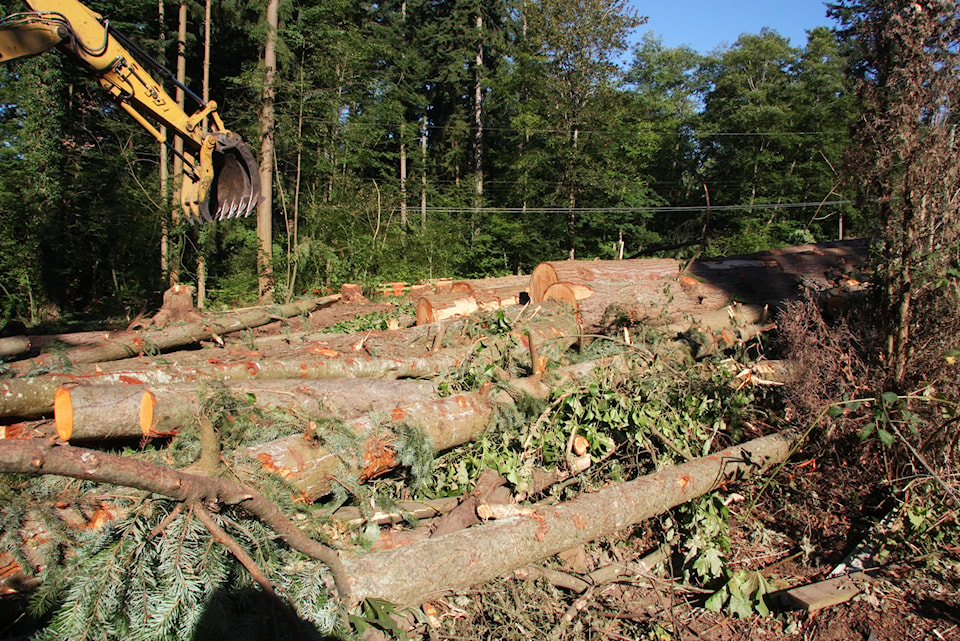The Editor,
Nearly two acres of mature Douglas fir forest were recently cleared on Panorama Ridge, and at least five logging trucks trundled off the ridge loaded with 100-plusyear-old logs. A heavily forested area, and the centre of our community, is now pretty close to a clear-cut, all to facilitate a threelot subdivision. The really sad aspect of this saga is that all these trees did not need to be removed and it is City of Surrey policy that helps to take them down.
There is no logical reason why newly subdivided lots need to be cleared before they are sold to the individuals who are going to build houses on them. Except developers want these trees down and have often expressed the opinion that cleared lots sell more quickly and for more money.
So Surrey allows developers to "guess" at where the eventual lot purchasers will build their houses, put their driveways, etc., and then to clear the property to match these guesses. When the lots are sold, the buyers often decide to place their houses and driveways in different locations, and in most cases are allowed to cut even more trees to facilitate their choices.
I call it the "cut twice, build once" policy, although in this latest clear-cut, there will be few additional trees to cut on the second go around.
The City of Surrey will argue that it places a restrictive covenant on any trees fortunate enough to be still standing after the first cut. The reality is that the city will not enforce these covenants and usually allows the eventual lot purchaser to cut additional trees. These denuded lots, a blight to any neighbourhood, often sit for many years before they are sold.
An alternative, tree-friendly approach would have the city work with the developer to place lot boundaries, utilities and potential building sites where they will minimize tree removal and then only allow the trees required for basic servicing to be removed. A restrictive covenant could be placed on all the remaining trees. When the eventual lot purchaser arrives at city hall with a set of house plans, the city works with the owner to minimize the removal of trees. "Cut once, build once!" As crazy as it sounds, imagine if someone who likes trees buys one of these lots and tries to build a house nestled in a grove of retained trees! In the years it takes to go from subdivision to new home, the trees stand and are a benefit to the community. Some just below "legal" sized trees may actually become legal size in this time period. In my opinion, using this approach, a significant number of trees that are now cut would be retained.
The current policy is designed to facilitate development and help developers increase profits, not protect trees and communities. That needs to change.
Bob Campbell
Surrey
